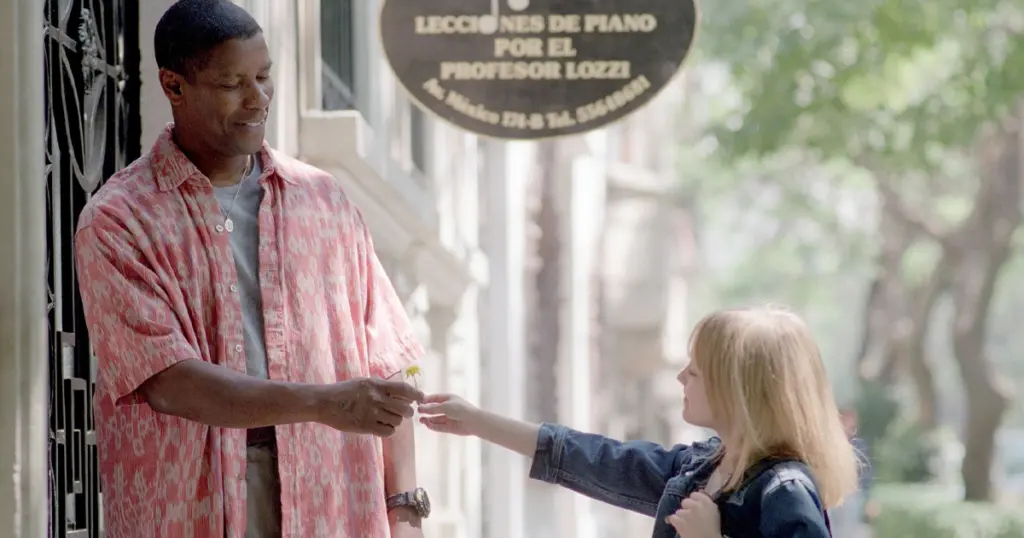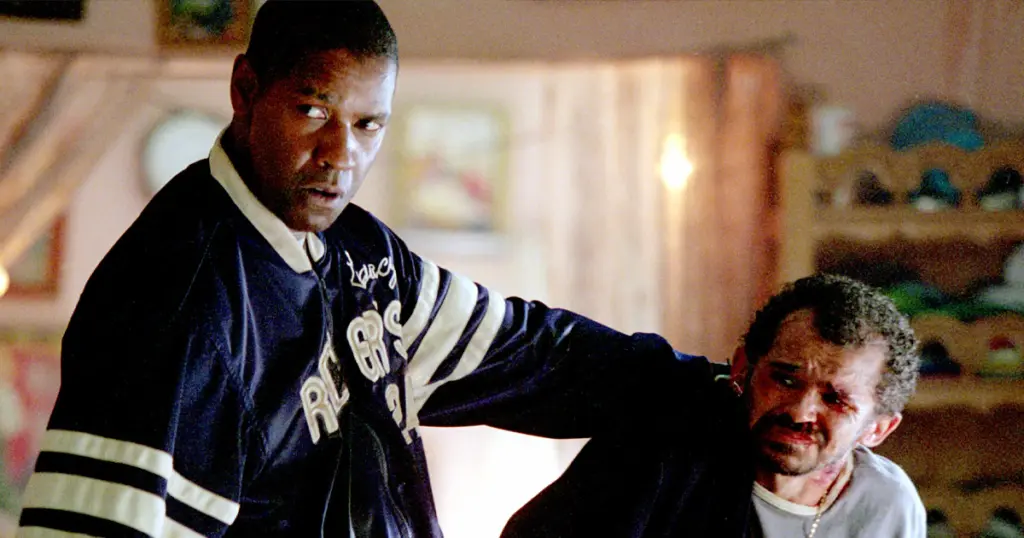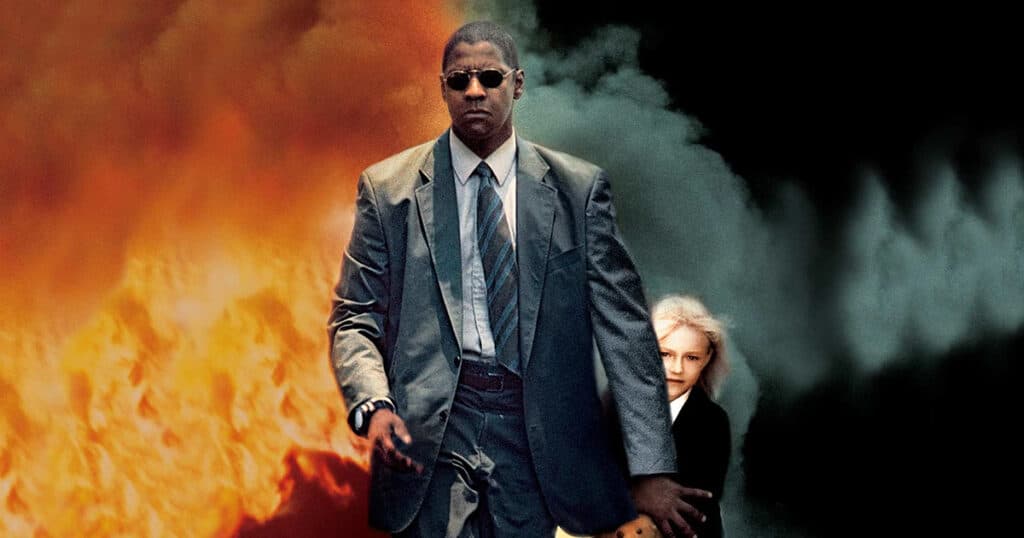A few weeks ago, Netflix announced it would make a TV adaptation of A. J. Quinnell’s Man on Fire, a novel which was famously turned into perhaps one of the definitive Denzel Washington movies, one which is also considered the late Tony Scott’s masterpiece. So what gives? Why improve on perfection? Could there possibly be a John Creasy that would be seen as an improvement on Denzel’s towering performance? But did you know that this movie wasn’t actually the first adaptation of Quinnell’s novel and that John Creasy’s adventures continued in book form despite his tragic end in Scott’s movie? In this episode of Revisited, we look back at one of the best action films of the 2000s and perhaps Denzel Washington’s most iconic role.
Flashback to the mid-eighties. Despite being about forty, Tony Scott was only just starting to move into features. The movie he was determined to make was Man on Fire, a violent revenge story based on author A.J. Quinnell’s novel. The novel entered around a retired American soldier, John Creasy, who’s become a broken-down alcoholic. He’s hired to be the bodyguard for the daughter of a wealthy textiles magnate living in Milan, Pinta. Despite his tortured past, Creasy finds a new purpose in protecting the child, to whom he becomes a surrogate father. When she’s kidnapped, Creasy takes several bullets trying to protect her, and he awakens from his coma to discover that her kidnappers violently murdered her. Creasy then embarks on a violent quest for vengeance, killing off a significant chunk of the Sicilian Mafia, only to live and fight another day in a series of novels Quinnell wrote.
The book was a bestseller, and Hollywood was keen to do a film version, and for Scott, it was a passion project. But disaster struck when his first feature, The Hunger, became a notorious critical and financial flop. Scott was removed from the project, and the producers hired a French director named Élie Chouraqui, who ended up filming an artsy version of the story that barely opened in theatres at all, despite an acclaimed performance by Scott Glenn as Creasy. It barely made half a million dollars and was received like a direct-to-video movie (you can actually watch the whole movie here). By contrast, Scott’s replacement project turned out to be Top Gun, which established him as an A-list director. Scott continued to be interested in directing a hardcore revenge drama, eventually turning his attention to an adaptation of Jim Harrison’s novella, Revenge, which starred Kevin Costner. His career continued, but Man on Fire was always in the back of his mind.
Flash forward to the 2000s. Tony Scott’s career was going strong, and eventually, when the notion to re-adapt the novel as a film was put forward, his name came up. Scott was interested but made many changes to the book with his chosen screenwriter, Brian Helgeland. Kidnappings in Italy had since become rare, but there was an epidemic of them in Mexico City; thus the change in locale. While the novel’s Creasy would live to fight another day, Scott and Helgeland decided to make their action film more of an epic tragedy, with Creasy the masterless samurai who dies a warrior’s death, sacrificing his life to save his young charge who, in a departure from the novel, wouldn’t meet as grim of a fate.
While Scott had wanted to cast Marlon Brando as Creasy in the 1980s, by then, he was obviously way too old and not remotely believable as a former special forces operative. Scott still wanted to cast him as Rayburn, but in the end, Christopher Walken got the role, which many critics count as one of his best. But who would play Creasy? All of the usual suspects were considered. Tom Cruise, Bruce Willis, Robert De Niro, and Will Smith were all possibilities. But Scott ended up with a cooler actor – Denzel Washington. While now Washington’s casting seems like a no-brainer, he wasn’t an action guy then. His thing was prestige drama, although he’d jumped into a more action-driven role with Training Day and won an Oscar. He’d also starred in Crimson Tide for Scott, and the two liked each other a lot – but hardcore physical action wasn’t really his thing.

In the end, Washington wound up being inspired casting, and he’s always held the film up as one of his best vehicles, speaking admiringly of Tony Scott and his young co-star Dakota Fanning, who he would always single out as one of his favourite people to work with. The two are finally reuniting for The Equalizer 3. Washington trained hard in weapons to believably play an ex-operative, but he was just as convincing as the gone-to-seed, alcoholic Creasy. An action star might have given you an action-hero performance, but with Washington, the nuance and emotion of the role were the critical things, and since then, it’s become an iconic role for him.
He’s matched by Dakota Fanning, who was only nine years old, but delivered one of the most affecting child performances ever. The movie benefitted from a stacked supporting cast that included Mickey Rourke, who was cast against type as a sleazy lawyer, Radha Mitchell as the child’s mother, and superstar singer Mark Anthony as the father. Plus, there was Rachel Ticotin and Giancarlo Gianni as a few of Creasy’s allies. Still, best of all was Walken as his stalwart best buddy, Rayburn, who has the movie’s best line, “for Creasy, death is an art, and he’s about to paint his masterpiece”.
Tony Scott, who’d always been known for his highly stylized editing, went further than usual with Man on Fire, working with extensive filters and rapid-fire editing and using a chaotic score that included various references. First, there was Harry Gregson Williams’ score. He also sampled Michel Colombier’s score for Against All Odds, Clint Mansell’s score for Abandon, David Arnold’s score for Changing Lanes, plus tracks by Lisa Gerrard, who had contributed to his brother Ridley Scott’s Gladiator. The movie also extensively used Nine Inch Nails, with Trent Reznor receiving a Music Consultant credit, perhaps paving the way to his second career as a composer for film soundtracks.

The film was also bold in its onscreen violence, with Creasy using brutal torture on his opponents/victims. He cuts off fingers, blows off a hand with a shotgun, cuts off an ear, and, most memorably, places a bomb (which he detonates) in someone’s anus. Don’t mess with Creasy.
Funny thing, though – the film was only a mild financial success. It made about $77 million domestically and another $52 million internationally, meaning it recouped its budget, but it was on home video where the movie became a classic. It’s considered one of the best American action movies of the era. The action/thriller genre has become a favourite of Denzel’s fans, with him having a string of hits in the genre, including three more collaborations with Tony Scott before the director’s death – Deja Vu, a remake of Taking of Pelham 123, and Unstoppable. Sadly, Tony Scott committed suicide in 2012, and all of us who love his movies miss him terribly. Man on Fire is up there with his best work, and while it might be passed in popularity by something like Top Gun, many consider this his most personal work and perhaps the best example of what made him one of the greatest action-thriller directors of all time. Rest in peace, sir.
This brings us back to the idea of Netflix doing a Man on Fire series. While Creasy lived in the novels, and a series could run for many seasons, I’d advise against it. You’ll never tell the story better than Tony Scott and writer Brian Helgeland did here, and the chances of casting a better Creasy than Denzel are nil. While Man on Fire was technically a remake, this classic film should be left alone.
Originally published at https://www.joblo.com/man-on-fire-denzel-washingtons-best-movie/




